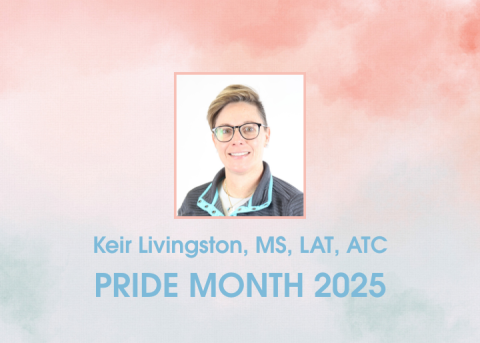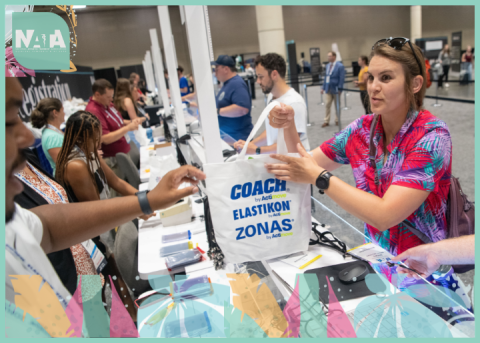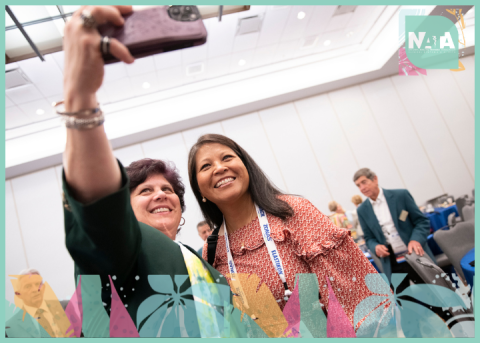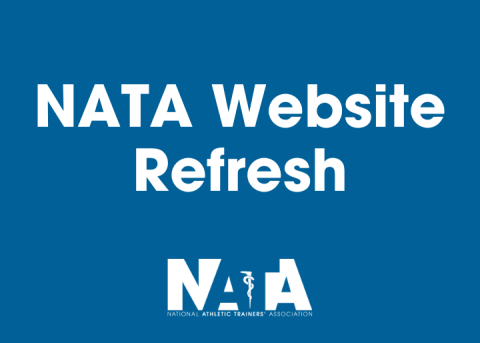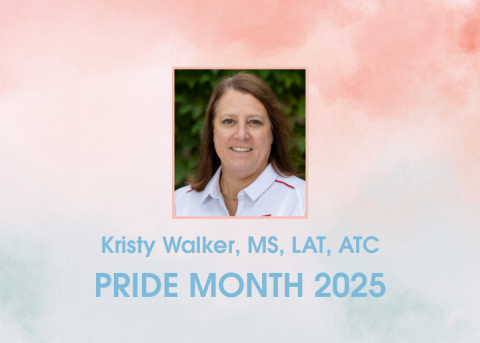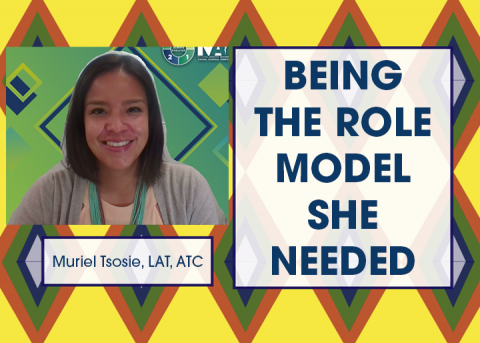
In honor of National Native American Heritage Month in November, the NATA Now blog is highlighting some of NATA’s Native/Indigenous members and their impact on the athletic training profession.
For the first time in school history, Window Rock High School in Fort Defiance, Arizona, has a certified and licensed athletic trainer in its community. Prior to the arrival of Muriel Tsosie, LAT, ATC, the school used physical therapists from the local hospital as a resource. Although relatively new to the position – she started two months ago – Tsosie has already made a large impact on the athletes and coaches by implementing new policies and protocols and educating stakeholders.
“My goals as the AT is to assist the athletic department,” Tsosie said. “The athletic director and superintendent are really involved. I want to make sure the policies are written properly so the coaches can easily abide by them and understand them. Through the policies, I want to make sure coaches are receiving the education and awareness they need. I want to be there to help educate them and let them know I’m there to support them in whatever needs they have to make coaching easier.”
One of the challenges Tsosie has had to overcome is that the standards and best practices resources she has come across don’t always meet the needs of her school. Window Rock High School is a rural school, meaning it doesn’t have resources readily accessible, Tsosie said. On top of that, the school houses low-income students and, for Tsosie, having policies and an infrastructure that can provide for the students, such as water, sanitizing wipes, electricity, etc., is imperative.
Tsosie said she’s had to be assertive with administration while getting policies in place and worked with the Arizona’s Board of Athletic Training’s Secondary School Committee as well as her network of people she’s met through symposiums, conferences and social media to build the policies.
Inspired Through an Idea
Growing up, Tsosie never had any experiences with athletic training; however, it was like she knew what an AT was before she knew what an AT was, she said.
“The idea of an AT [came to me] when I was really young, 6 or 7,” she said. “My aunt took me to rodeos and I would see the EMTs because they cover sporting events in the area. If a cowboy got hurt, they would help them. As a young child, I knew helping people is what I want to do.”
Tsosie said what drew her to athletic training was the fact that she thought being someone who helps with sports was the coolest job.
“‘You get into any sporting event for free, and you get to help’ – that was the thought in my head,” she said. “The medical side didn’t come in until after I got into the program and learned about them. It all tied in to make sense, and it hit me: ‘Oh, this is what an AT does.’”
When Tsosie was accepted into the University of New Mexico’s athletic training program, it was her first time interacting with an AT. Because of this, Tsosie was able to go into the program with an open mind and absorb everything like a sponge, ask questions and engage with the ATs, she said.
“I feel athletic training is the profession for me because I love sports,” Tsosie said. “Not a day goes by that I go without sports, whether in TV, in person or my children participating. I don’t see myself in any other settings that don’t include the realm of physical activity. I don’t see myself sitting in an office. I did that. It’s not that I wasn’t happy and I learned many skills that I use in athletic training, but I knew I could do more and be more.”
Within her two months at Window Rock High School, Tsosie has already proved valuable to the community as well. When an athlete was injured during football, the next available spot for him to be seen at the hospital would be the end of November, causing uncertainty if the athlete would be able to finish the season. Tsosie used her resources to get him referred to UNM orthopedics. The athlete is now cleared and playing football again, able to finish the season.
Additionally, another injured athlete was referred to an out-of-town Arizona hospital because he was injured during an away game. Tsosie took it upon herself to get the athlete referred to a local hospital so his family wouldn’t have to worry about traveling to and from the out-of-town hospital during his recovery.
“For the grandmother, that’s the difference between affording and not affording gas money and taking him to appointments, but now, she can do it locally,” Tsosie said. “I empathize with struggling financially, with providing. That’s one of the biggest things and impacts I can make: making it easier for them so they don’t strain or worry about having to pay for anything.”
Being the Figure She Needed
Tsosie didn’t start out in the secondary school setting. It took a few years for her to find where she wanted to be. She said it was because she never had someone influential to look up to, ask questions and help her understand what an athletic trainer is and does.
“Growing up, I didn’t have that individual female figure to look up to and say, ‘That’s who I want to be,’” Tsosie said. “That’s the biggest impact I see now. The youth coming here, now they have someone to look up to and ask questions. Maybe not specifically an AT or the medical field, but I know nurses, doctors, neurologists and those people who are Native as well.
“It’s more approachable, someone who can relate to where they come from and share same values – whether family, culture or tradition. That’s the real value and importance of representation is having someone there to guide you. I didn’t have that, so that’s why I took the long route to where I wanted to be because I didn’t know how to get there.”
Now, Tsosie uses her position talk to students to encourage them to follow their dreams. Tsosie said she loves hearing who they want to be, where they want to be and why. She wants them to be able to ask questions and learn how to ask questions, Tsosie said.
“Also as Native ATs, we’re a really small group,” she said. “Our percentage is less than one, so I encourage all Native/Indigenous ATs to continue their promotion of self-identity and being proud of who they are. Encouraging the representation will make a big impact in our generations to come.
“Lastly, I want to thank the head coach of the football team, Wilbur Begay. He was the one who really pushed to get me on the coaching staff. He didn’t want to go the season without me, and he really advocated for me this last year to get me at the school.”

